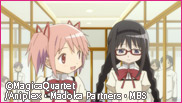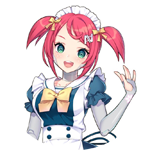In this article series, Lucy Rubin breaks down anime analysis for Around Akiba and how we can use it in our everyday anime-watching lives.
What is Anime Analysis?
As anime viewers, we are pretty good at figuring out if an anime is ‘good.’ More often than not, we use the “three episode rule” to determine if a show is worth watching. However, through anime analysis, we can dive deeper into why a particle series is “good,” “bad,” or even something more by considering “how” and “why”we like the shows we like. Instead of a gut reaction from the first three episode, anime analysis offers tools to evaluate a show and can be useful in developing our anime tastes.
Within the animated medium, the entire world, from background to soundscape to the very look of characters, is deliberately constructed. In other words, everything we see in anime is a choice that someone – be it the director, storyboard artist, screenwriter, or keyframe (anime is a collaborative work!) – made. Anime analysis, like film analysis, is the process of considering what choices were made to create a work, why those choices were made, and how exactly are they affect us as viewers.
Narrative vs. Story
We will begin with narrative. Most of us already consider narrative anyway when we think to ourselves “is this a good story?”
But, narrative is not story.
Narrative can be defined as the organization of plot elements into a series of connected ideas that work to engage the viewer and create an emotional response. Let’s take a look at Puella Magi Madoka Magica.
Narrative as seen in Puella Magi Madoka Magica
 (SPOILERS AHEAD) The difference between narrative and story can be seen through Puella Magi Madoka Magica. At the end of the series, we know that Homura has been the one who inadvertently caused Madoka to have so much potential as a witch. The infamous episode 10 re-contextualizes the entire series, casting Homura as not the villain, but the hero. But consider this, how would our thoughts on Homura have been different if we knew from the start that Homura was doing this from episode 1? Placing this information in episode 10, rather than the beginning of the series, was a deliberate narrative decision, designed to undercut the audience’s experience with the characters they thought they knew for the bulk of the series.
(SPOILERS AHEAD) The difference between narrative and story can be seen through Puella Magi Madoka Magica. At the end of the series, we know that Homura has been the one who inadvertently caused Madoka to have so much potential as a witch. The infamous episode 10 re-contextualizes the entire series, casting Homura as not the villain, but the hero. But consider this, how would our thoughts on Homura have been different if we knew from the start that Homura was doing this from episode 1? Placing this information in episode 10, rather than the beginning of the series, was a deliberate narrative decision, designed to undercut the audience’s experience with the characters they thought they knew for the bulk of the series.
Whereas story accounts for the whole picture of what happens in a given work, narrative, specifically narrative order, refers to the order and way in which the audience gains information, and how that affects our relationship to the characters or larger story. Returning to Madoka, the narrative order changes our relationship with them, changes our ideas about the magical-girl world, and greatly affects the way in which we feel about the conclusion of the series.
Considering narrative order is only the first steps in watching anime analytically. In our next article, we will examine narrative causality. Be sure to stay tuned!






